This post was originally written before the horrific event in Orlando, Florida, last weekend. I’ve rewritten it in part as I reflect on what is happening in the US these days and how the opportunity to see another part of the country affected my views.
The Road to Taos, Taos, and the Road Back to Denver
Because we had taken the “low road” or “river road” from Taos south to Santa Fe when we arrived, we decided to take the “high road” back to Taos when we left Santa Fe. Although some commenters on TripAdvisor had made it seem as if this was going to be a very scary ride, it wasn’t at all. It was, however, incredibly scenic.
We stopped at the Santuario de Chimayo on our way. It is an important Catholic pilgrimage site and a pretty adobe church on lovely grounds. I was particularly taken by this painting, which reminded me of Da Vinci’s Last Supper; the people surrounding Jesus are quite obviously Native American and Spanish in their ethnicity.
We continued north, and the scenery just got better and better.
Finally, we arrived in Taos. As you can see, there was some kind of motorcycle event going on that weekend, and everywhere we turned, we saw and heard motorcycles.
Taos is actually quite a small town, and we realized pretty quickly that we had seen a good part of the town when we’d stopped to stretch our legs on our way south to Santa Fe four days before. In fact, Taos seems like a down-sized version of Santa Fe. There is a plaza and even a hotel called La Fonda on the plaza. There is an old street called Ledoux Street that has some galleries and historic homes, like a much smaller version of Canyon Road in Santa Fe.
On the outskirts of Taos, a few miles south of the town, there is a church named for St. Francis, just as in Santa Fe. This one, however, is an adobe church, and it has been painted by Georgia O’Keefe and photographed by Ansel Adams. You can see why even in my photographs. The way the light hits the various planes of the church’s exterior gives it a sculptural feel that goes beyond its architectural and religious aspects.
The scenery around Taos also makes you stop and appreciate where you are:
Despite its small size, Taos has four museums that we found well worth visiting. Two reflected the importance of Taos as an art center. First, on Ledoux Street, we visited what was once the home of the artist Ernest Blumenschein[1] and is now a museum of his works and those of his wife Mary Shepherd Greene Blumenschein and his daughter Helen Greene Blumenschein. Ernest Blumenschein was one of the founders of the Taos Society of Artists in 1915 and is considered one of those who drew other artists to Taos, making it an important art center. Blumenschein himself was considered one of the leading artists in the Taos art community.
I’d never heard of any of the Blumenscheins before, and although their art was worth seeing, what was more interesting to me was the house itself. It was created from what had once been a fortress surrounding the town made up of interconnecting rooms. Over time the Blumenscheins acquired a fair number of these rooms for their home. The rooms are all connected end to end (with a few exceptions), and it was interesting to see how the family had decorated them and turned what had been a fort into a home.
The second museum we visited was also on Ledoux Street, the Harwood Museum of Art, where we saw a really fascinating exhibit about Mabel Dodge Luhan, another person whose name was unfamiliar to me, but whose life was quite remarkable. As described on the brochure for the exhibit, Mable Dodge Luhan (1879-1962) “brought modern art to Taos, New Mexico, putting it on the national and international maps of the avant-garde and creating a ‘Paris West’ in the American Southwest.” Among those whom she invited to Taos were Georgia O’Keefe, D.H. Lawrence, Edward Weston, Martha Graham, and Ansel Adams.
Mabel was born in Buffalo, New York, and lived in Paris, where she met her first husband, Edward Dodge, and then in Florence, where she and her husband established a salon attended by Gertrude Stein and many other artists and writers of the early 20th century. When she and her husband returned to New York City, they established another salon and became instrumental in introducing modern art to the United States in the 1910s. Mabel left her first husband for John Reed (subject of the movie Reds) in 1913, and in 1915 she established the Elizabeth Duncan [sister of Isadora] School of Dance in Croton-on-Hudson, New York (where 50 years later I would go to a music and arts camp).
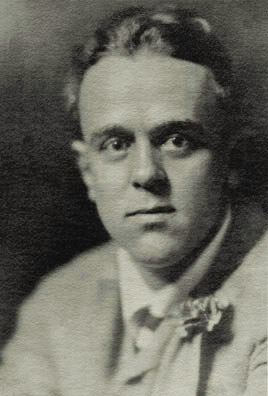
English: John Reed, American journalist and radical political activist, c. 1917. Portrait published in USA prior to 1923, public domain. (Photo credit: Wikipedia)
Mabel then met her second husband, Maurice Sterne, and spent the summer of 1915 with him in Provincetown (a town I know well, having visited there every year since I was ten years old). She and Sterne married in 1917 in Peekskill, New York (where my husband and I were married just about 60 years later and almost 40 years ago). Shortly after, Mabel and Maurice moved to Taos, where she lived for most of the rest of her life. She married her third husband, Tony Luhan, in 1923, and that relationship seemed to endure for the remainder of her life. She died in 1962 and is buried in Taos.
I was tickled by the number of geographic parallels Mabel and I shared (Croton, Provincetown, Peekskill), and the exhibit was very effectively organized to show the impact she had on Taos by displaying works of the artists she drew to Taos and various quotations and other writings by or about Mabel and her role in the Taos art community.
In the other two museums we visited we learned more about the general history and culture of the region. First, at the Kit Carson Home & Museum, we learned something about the real man behind the myth of Kit Carson (1809-1868). Although he is best known for his role as a trapper and scout who helped with the exploration of the American West, he was also a family man. He was married three times, each time to a Native American woman. His first wife, with whom he had two daughters, died; his second marriage did not last; his third marriage to Josefa in Taos lasted until his death. With Josefa he had eight children; Josefa died in 1868 giving birth to the eighth, and Kit died just a month later.
Although Kit Carson is known as someone who fought in many battles against the Indians, he also served as an agent for the Native Americans in the Taos area. However, he is known for leading the relocation of the Navajo people from Arizona to New Mexico at Bosque Redondo. I found this description of that event and Carson’s role in it quite disturbing:
Although his orders were to capture women and children and kill all men, Carson chose to disregard the orders. He ultimately gained the submission of the Navajo people by destroying their food sources at Canyon de Chilly.
Escorted by U.S. troops, over 9,500 men, women and children were led on foot to Bosque Redondo, a reservation in New Mexico 400 miles from their homes. The march was brutal and many Navajo died on The Long Walk.
Realizing the utter failure of the Bosque Redondo reservation, Carson was influential in urging Congress to grant permission to the Navajo peoples to return to their homeland in 1868. Today there is a memorial to the Navajo people at Bosque Redondo.
[From the guide to the Kit Carson Home & Museum]
Thus, Carson had conflicting roles and relationships with the Native American people. He married three Native American women, but he also fought to take the land from Native American people. He led a forced relocation of the Navajo people, but then acted as their agent and argued to obtain permission for them to return to their original land.
Finally, we visited the Millicent Rogers Museum. Millicent Rogers (1902-1953) was another name that I’d not heard before. Her grandfather Henry Rogers founded Standard Oil with John D. Rockefeller; she herself was an artist and a collector, and she moved to Taos in 1947 in the aftermath of a relationship with Clark Gable. She designed jewelry, and she supported the artistic careers of many Native American and Hispanic artists. The museum not only displays her own work, but also (and primarily) the work of those local artists. I found an exhibit comparing Native American weavings with Hispanic weavings quite interesting as it showed how the two styles influenced each other over time. An exhibit of baskets revealed how different tribes used different basket making techniques and styles.

Decorated bowl from the ruins of the former Hopi village of , circa 1400-1625 AD; now located at the Millicent Rogers museum in Taos, New Mexico (Photo credit: Wikipedia)
The following photos were taken on our way to the Millicent Rogers Museum, as we started our drive north from Taos towards Colorado.
From these four museums, I developed a perspective not only on Taos, but on art, culture, and history. All four museums focused on how individuals can influence history and culture and effect changes in both: Carson, through his explorations and through his role in the mistreatment of Native American peoples; Blumenschein, Luhan, and Rogers through their efforts to support and encourage the creation of artistic works. Rogers helped to preserve the local culture of the Native American and Hispanic communities in and near Taos.
I also was struck by the painful disparities that exist in this country: people who have incredible wealth and power or perhaps just one or the other, like Carson, Blumenschein, Lujan, and Rogers, and people who are poverty stricken and powerless. People who abuse their power and people who use their power for good cause. People who respect the diversity and cultures of others and people who believe that only they know what is right and good.
Traveling back from Taos to Denver, we again marveled at the open spaces, the gorgeous vistas, the limitless sky. The views from the Rio Grande Bridge north of Taos are breathtaking. Crossing through the mountains east of Fort Garland was incredibly uplifting.
Looking back on this trip and all that we saw, especially in light of what is happening across this country, I am struck by the contrasts and incongruities that riddle our nation. This is such a beautiful country. Everywhere you look, there are sights to inspire you and make you realize how small we are and how majestic nature is. Everywhere you go, there are signs that we human beings recognize that beauty, that majesty, especially in the art we are inspired to create and to appreciate.
But there is also much ugliness in us, so much hate and disrespect and intolerance. There is not enough understanding of diversity; there is not enough empathy for those who live in poverty and feel powerless. There is too much ignorance and prejudice.
In light of this weekend’s hate-filled massacre in Orlando, in light of the electoral process which has produced a candidate who promotes hate and intolerance, in light of the continuing paralysis in our government over issues like gun control and climate control and so many other critical issues, it is hard not to feel hopeless and disgusted and despair about our country.
But then I look back on my photographs and remember all that we saw and felt and learned, and I remember that people can appreciate each other and can be sensitive and tolerant. People can be filled with awe and inspiration and love and respect. Yes, we have much to be ashamed of in our history, but we also have much that should give us pride. We have moved forward in many ways. In my own lifetime, I’ve seen much social progress; the civil rights movement, the women’s movement, the LGBT movement, and the environmental movement have all had major impacts on our society, making this a better place for all of us to live.
We can make the right decisions. Yes, too often we have chosen the wrong path. But I want to believe that we can more often do what is right—that we can live in peace, that we can love and respect one another, and that we can appreciate the beauty that surrounds us all, inside and outside.
[1] Blumenschein was born in Pittsburgh in 1874, and his father was a German immigrant. I wondered whether his family had any Jewish roots or whether he might have crossed paths with my Schoenthal relatives in Pittsburgh, but I’ve found nothing to support either notion.


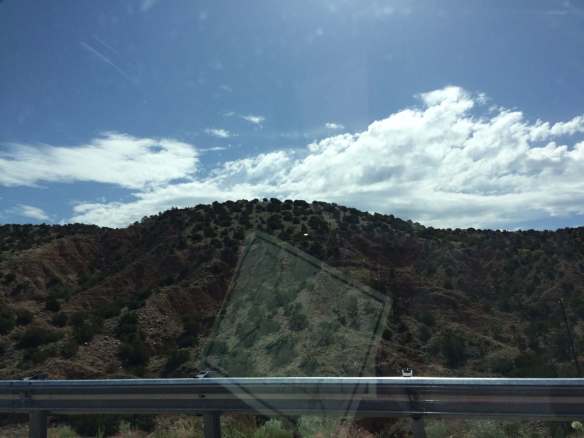






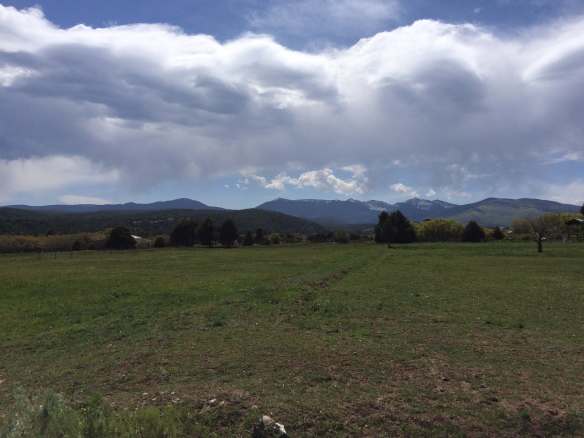












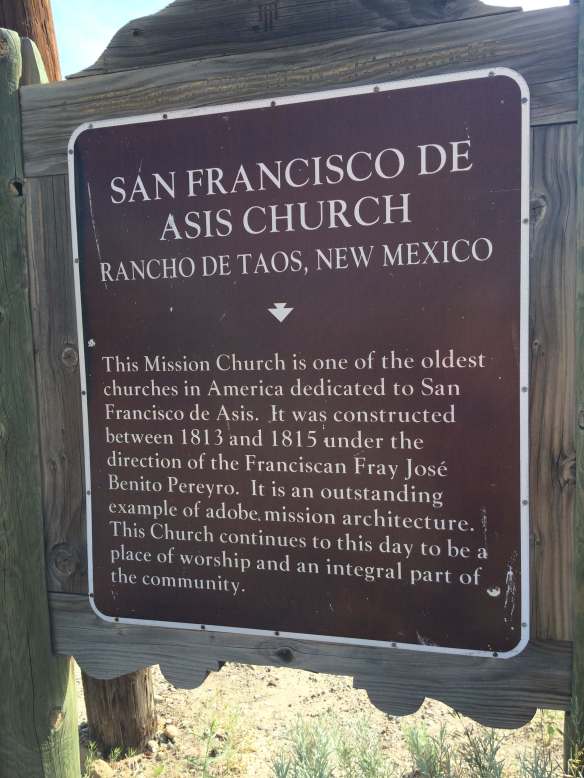














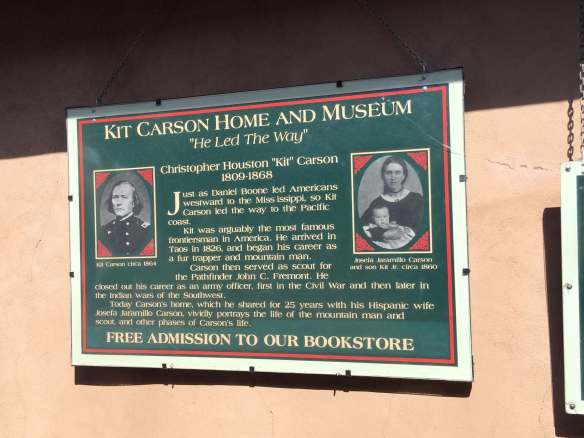

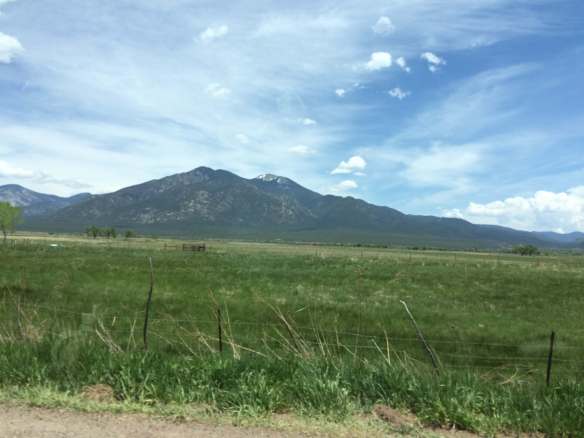






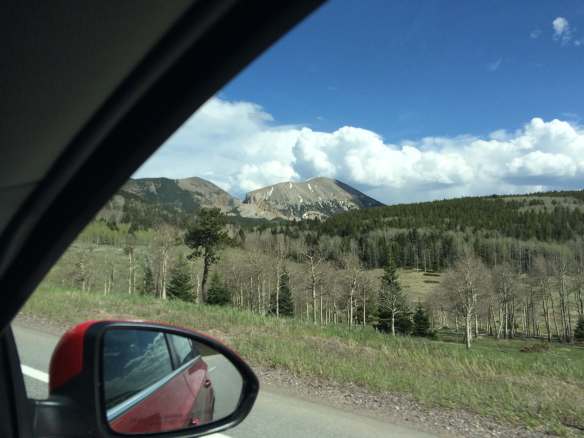



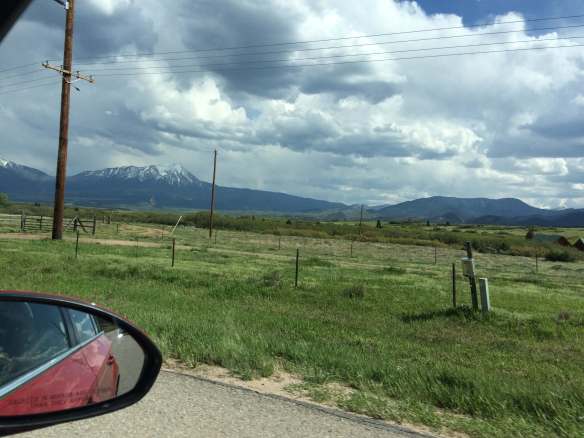
Amy I am not sure you had this info Sues daughter Sharon had a son Alex born Dec 17, 1996. She had him for about 1 year than lost custody of him to the state of Florida and was put up for adoption. Have no idea of what ever happened to him 😩
Sent from Robins iPhone
>
LikeLike
I didn’t know about this at all. I will add him to the tree. It sounds like a very sad story.
LikeLike
I enjoyed reading this and seeing all your wonderful photos.
Even with the current events being as they are you ended it in a positive note. I loved your last sentence.
LikeLiked by 1 person
Thanks, Cathy. We do have to hold on to hope, don’t we? Otherwise, there is nothing but despair.
LikeLiked by 1 person
You are so right Amy!
LikeLiked by 1 person
This is what Trump, Clinton and Obama should have said:
LikeLiked by 1 person
That might be one time I actually agreed with Bibi!
LikeLike
Beautiful post – a pictures – Amy.
It doesn’t sound like you made it to the Taos Pueblo, which is a wonderful look into the past. And it makes me really understand what the Native Americans went through and still experience today. I’m glad you are able to appreciate the beauty of our country – in some small way it takes the sting out of everything else.
LikeLiked by 1 person
We made a conscious choice not to go there. My friend (Scott’s wife) advised us not to because she had found it exploitative and depressing to treat the residents as if they were subjects in a museum. Maybe we should have gone. But we had to cut some sites anyway—you can’t see it all!
LikeLike
Your post today touched on so many ideas, places, events, and of course people. I think you could have done several blogs on what you wrote about today. By chance I have just finished a book on Kit Carson titled “Blood and Thunder” by Hampton Sides. It gives great insight to the times and places in which this history unfolds. If anyone is doing genealogy research in this area this book should be a must read. Also as to Kit Carson he was a very complex person who lived a remarkable life, filled with great highs and lows.
LikeLiked by 1 person
You are probably right about doing several blog posts. I just wanted to tie up the travel posts and start focusing again on genealogy. Maybe I should have done several short ones. It’s always hard to know where to draw the line!
I was quite fascinated by how complex Kit was and also by how interesting a life he led, starting with being orphaned and then running away from the shop where he was being apprenticed (or perhaps indentured?). It’s a reminder that we are all complex in so many ways.
Thanks for commenting and following the blog!
LikeLike
Hi Amy, The Da Vinci type painting at the Catholic Pilgrimage site looks wonderful!
Let us hope for peace and equality in the future.
LikeLiked by 1 person
I loved it also! A real reflection of the diversity of society.
LikeLike
Lovely post. It sounds like your trip was really wonderful and inspiring. I’m so happy for you.
LikeLiked by 1 person
Thank you—it was a great mix of amazing scenery, history, art, fun, and genealogy!
LikeLiked by 1 person
Sounds like the perfect balance to me. 🙂
LikeLiked by 1 person
I feel as if I went to Taos with you! You are so lucky that your husband (Yes?) would go to four museums with you!!! I am never that lucky hah. I wonder if Carson regretted his role later on.
LikeLiked by 1 person
Yes, my husband is a wonderful traveling partner. He enjoys museums as much as I do. He even has gotten to enjoy hunting for headstones with me, though it’s not his favorite activity!
I think the fact that Carson worked to get the Navajos permission to return to their homeland in New Mexico is evidence of his regrets.
LikeLiked by 1 person
Probably it is evidence, but you know how some people don’t like to admit they were wrong to begin with hah.
LikeLiked by 1 person
This is a lovely, reflective post Amy. Like you I despair at the stupidity, carelessness and sometimes sheer evil that humanity can produce, yet struggle to reconcile that with the good I experience in my everyday life. We are facing testing times and I so hope that goodness prevails. Thank you for sharing your thoughts and experiences and reminding me how many people are part of the goodness.
LikeLiked by 1 person
Thank you, Su. It is a struggle to be optimistic these days, but then I think of where we’ve been and what we’ve accomplished, and I have hope.
LikeLiked by 1 person
Thank you for this – all of this, from a view of country so utterly different from my own, so big and so empty, to your sentiments at the end. I’m afraid intolerance is a part of the human condition, and the same unashamed corruption and exploitation of the weak once fuelled the ruthless determination needed to conquer those ruthless lands. The one, it seems to me, is born of the other: starvation has no conscience. Yet America has given one great gift to the world. The Internet, the worldwide web which now means no demon can conduct his demonic purpose in secrecy, and all fraud and manipulation is laid bare somewhere. No-one can shut the world out, anymore. So I have hope.
LikeLiked by 1 person
Thanks, Frederick. I hope you are right. I am about to read your post about gun violence and will say more there, but sometimes it is amazing to me how England, our cultural and political birth place, is so difference from the US—not just in geography, but in culture and politics. It’s fascinating.
LikeLike